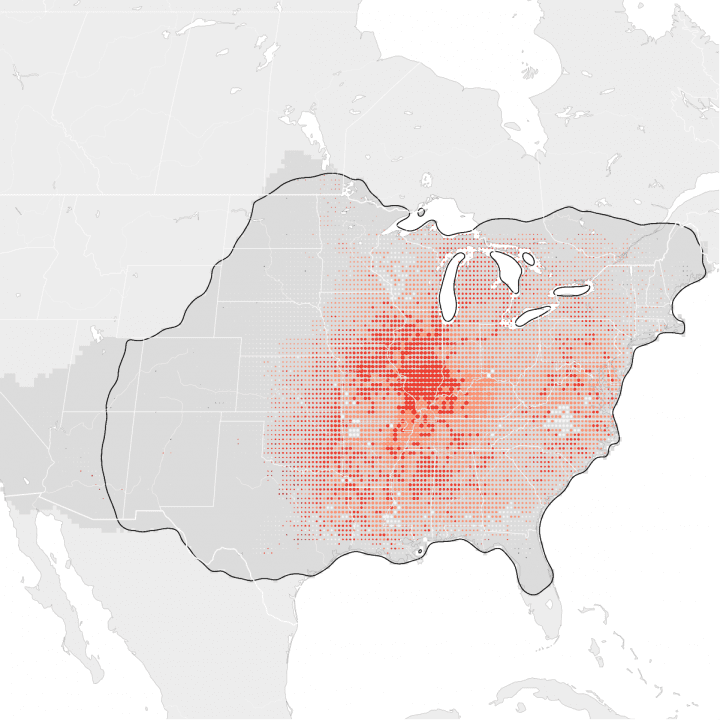Blue Gemstones with Wings: Lazuli and Indigo Buntings
Illustrations by Bartels Science Illustrator Jessica French
June 17, 2019From the Summer 2019 issue of Living Bird magazine. Subscribe now.
Birders in both the East and the West can see delightful, cheery blue buntings. The Indigo Bunting sings with cheerful gusto (they’re sometimes nicknamed “blue canaries”). The Lazuli Bunting mixes splashes of orange with its azure plumage (this bird’s common name stems from the lapis lazuli blue gemstone). Like other blue birds, these buntings lack blue pigment. Their jewel-like color comes instead from microscopic structures in the feathers that refract and reflect blue light, much like the airborne particles that cause the sky to look blue.
West: Lazuli Bunting
The beauty of the Lazuli Bunting did not escape the early naturalist who gave it a scientific name (Passerina amoena) meaning “beautiful sparrow” (though it’s not a sparrow). California ornithologist Irene Grosvenor Wheelock rhapsodized about this bunting in a field guide in 1912: “Long after the other birds, worn out by family cares, have ceased their music, this blythe little ‘blue boy’ carols his jolly roundelay from the top of a tall tree.” Persistent and conspicuous singers throughout the breeding season, Lazuli Buntings create “song neighborhoods” (much like their eastern cousins) in which songs from a particular area all sound similar. Read more about Lazuli Buntings in our All About Birds species guide.
Year-round Abundance: Lazuli Buntings are widespread west of the Great Plains in summer in a variety of brushy habitats, including willow thickets, sagebrush, chaparral, and open scrub. They are also an abundant breeder in shrubby habitats that come back a decade or so after a forest fire. They spend winter along the Pacific slope of Mexico, with some buntings wintering in southern Baja California.
East: Indigo Bunting
These brilliantly colored birds whistle their bouncy songs through the late spring and summer all over eastern North America. Indigo Buntings (Passerina cyanea) form “song neighborhoods” in which breeding males in an area share nearly identical songs. The sequences of notes are unique to local song neighborhoods, where buntings share or match the same song theme. These neighborhoods average three or four males, but may have as many as 22 males all singing the same song theme. A local song may persist up to 20 years, gradually changing as song themes are modified when new singers add new twists to the song tradition from generation to generation. Read more about Indigo Buntings in our All About Birds species guide.
Breeding Trends: Indigo Buntings are generally abundant throughout the East, but their population has declined by 29% since 1970. Indigo Bunting populations show decreases in areas where there is intensive agriculture, such as southern Illinois. The species has demonstrated the ability for local population increases where there is expansion of shrubby habitat.
—Text adapted from All About Birds and Birds of the World.

All About Birds
is a free resource
Available for everyone,
funded by donors like you
American Kestrel by Blair Dudeck / Macaulay Library





